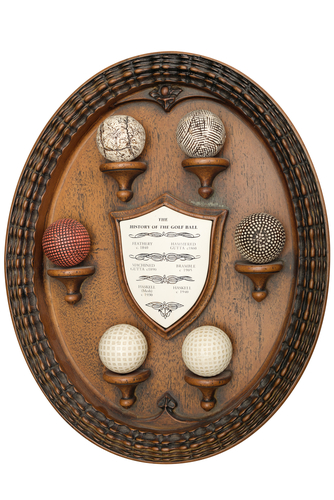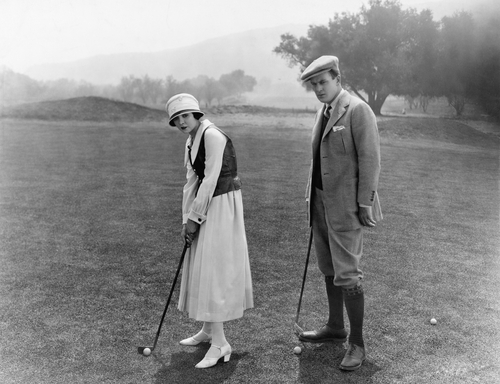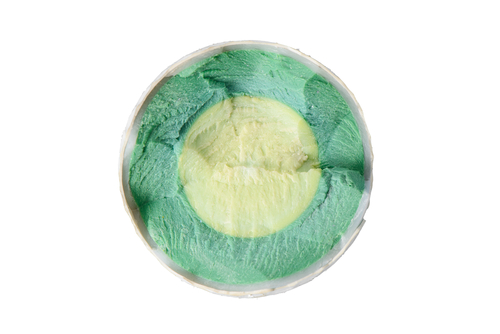Dimple Dynamics – The Evolution of the Golf Ball
Jul 12th 2017

Golf enthusiasts know that the right ball can add that few extra yards you need onto your game. Today’s technology ensures the core is just the right density and every dimple is perfectly placed, but golf has been played for centuries. The perfect aerodynamics of today’s golf balls have come a long way from the wooden balls that were smacked down the fairways of the origins of the sport. From beech wood to high-performance polymer, we’ll take you through the evolution of these little, dimpled balls.

Origins
The first golf games began appearing in historical records early in the 14th century, though there is very little information on them. Most golf historians believe they used wooden balls, hand-carved by carpenters from hard woods like beech. This type of ball was used in other games during that time period, so it would be natural to carry it over to golf. There is also evidence that some golfers, especially those in Scotland, used a softer ball—a leather ball stuffed with cows’ hair, imported from the Netherlands.
Around the turn of the 16th century, another ball was introduced. This kind was another leather ball, but stuffed with chicken or goose feathers instead of hair, and came to be known as the featherie. The standard filling measurement for a featherie was one gentleman’s top hat full of feathers that were then boiled down and stuffed into the leather ball. The featheries were difficult to make, which made them very expensive. It was also nearly impossible to make them perfectly round, which led to flight irregularities. The balls were also prone to explode on impact and didn’t play as well when damp. However, golfers soldiered on with them until better technology surfaced in the mid-1800s.
A Discovery of Aerodynamics
While golf flourished even with a lack of reliable golf balls, the next incarnation of the golf ball, the guttie, clearly turned a corner for the sport. In 1848, the Rev. Dr. Robert Adams Patterson discovered he could make a ball from the dried sap of a Malaysian sapodilla tree. The sap had a rubber-like feel and greatly improved aerodynamics. The gutties could also be melted back down and reformed if they went out of shape.
Soon after, many golfers discovered that using a guttie with some nicks and scratches provided a smoother flight. The imperfections gave the ball stability in the air. Golfers used knives and hammers to create patterns on their gutties for a better game.
Introduction of Rubber
Right on the heels of beginners’ aerodynamics, the accidental discovery of a rubber ball again changed the standard for the golf ball. In 1898, golfer Coburn Haskell was waiting in the lobby of the B.F. Goodrich Company when he picked up some rubber thread and wound it into a ball. When he bounced the ball and saw its amazing energy potential, his friend suggested he put a cover on the rubber and market it.
The rubber Haskell ball was the birth of the modern golf ball. Since this was before the invention of hard plastics, Haskell chose to cover the rubber ball with sap from the Balata tree, found in the Caribbean. The sap was an improvement but was still very soft and prone to cracking. Golfers still readily adopted this ball and continued to create the stabilizing patterns as they had done on the earlier gutties. Even a legend like Bobby Jones played with the fickle balata ball.

Technological Revolution
As science pushed forward, new compounds were created and discovered to be superior to the natural sap that had been used for so long. In the 1960s, chemical companies such as DuPont introduced synthetic resins for the cores and urethane compounds for the covers that were more durable.
As chemical compounds have become more sophisticated, each golf ball company plays with different core densities and different layers. Golfers today can choose which type of ball they prefer—soft, firm, built for distance, and everything else in between—but tournament golfers are more limited. The USGA and the British R&A keep strict regulations on golf balls you can use to ensure an equal playing field.
Final Thoughts
While the evolution of the golf ball is chronicled in the history of the sport, it can also be seen by taking a dive into the water hazards at the historic courses like St. Andrews and others throughout Scotland. From wood, to sap, to plastic, our modern golf ball has come a long way. It is clear our ancestors loved the sport of golf enough to stick with it despite the irregular, unreliable golf balls with which they played.
